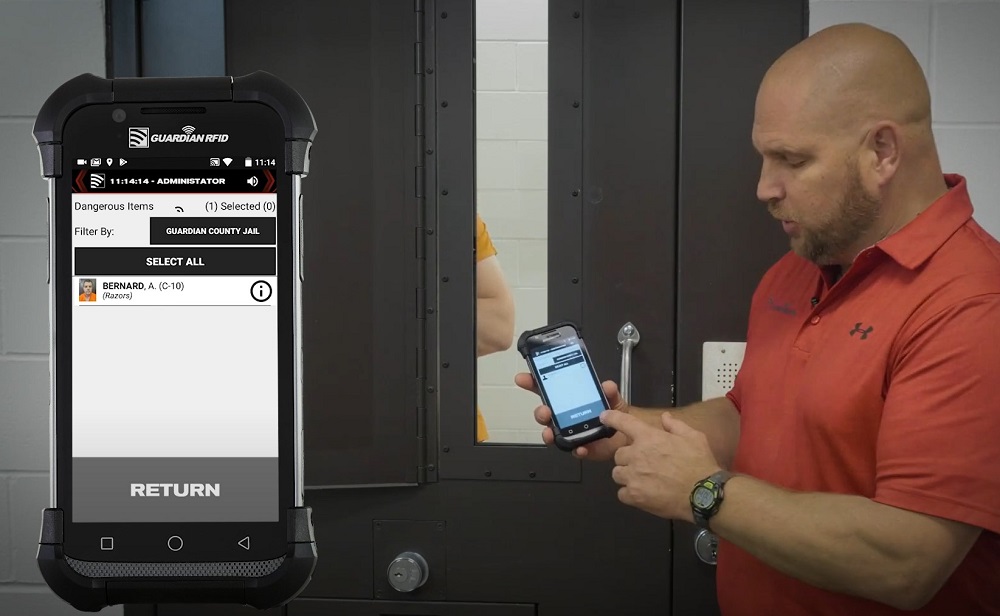Should Inmates Be Allowed to Handle Nail Clippers?
The debate over what items an inmate can have is a tale as old as time. However, this debate becomes a little more heated regarding basic hygiene materials and continues to escalate when these items can pose a safety threat. We’ve heard stories about supplies as simple as toothbrushes and floss being made into shanks and strangling devices - and don’t even get us started on razor blades.
Yet, there is another basic hygiene item that has caused deep controversy in corrections for quite some time: nail clippers. While some believe that nail clippers are a basic human right and are required for maintaining personal hygiene, others argue that they are an extreme security risk. This blog explains how GUARDIAN RFID can meet the happy medium between both sides of the nail clippers debate.
Pro-Nail Clippers
The case for this stance is that nail clippers are essential to personal hygiene, thus making their accessibility a basic human right. There’s no question that maintaining one's personal hygiene is important. Not only when it comes to preventing the spread of infection or disease, but also for the inmate’s physical and mental well-being. Allowing inmates to have nail clippers helps them keep their nails physically clean and trimmed while giving them the dignity that accompanies upkeeping their hygiene needs.
Aside from the human rights rationalization of the argument, allowing inmates to use nail clippers on their own contributes to a small portion of the overall functioning of the facility. How? Permitting inmates to use nail clippers on their own can reduce the number of requests for medical attention related to nail care, which can ultimately save hours of the staff’s time. So, if nail clippers are a human right and allowing inmates to use them can help facility operations run smoother and be more cost-effective with their medical resources, what’s the problem?
Anti-Nail Clippers
The other side of the nail clippers spectrum holds a very valid disagreement: safety. Anyone who has spent time working inside a correctional facility knows the day-to-day hazards that come with the job. It’s no secret that nail clippers could be considered a safety risk as they could easily be sharpened to a point and used to tamper with locks or worse, as a weapon against other inmates or staff.
Even the most seemingly innocent objects can be used maliciously if inmates choose to. Not to mention the inmates behind bars with violent backgrounds and serious charges who wouldn’t think twice about using nail clippers for reasons that don’t involve clipping nails. So, what’s more important? Dignity and smoother facility operations or the safety of the inmates and staff?
Where is the Middle Ground?
If a facility decides to allow inmates access to potentially dangerous or hazardous items, such as nail clippers, the key is to accurately track and consistently retrieve them. A considerable compromise would be to give inmates the privilege of clipping their own nails when they please but to make sure the facility has possession of said nail clippers when they are finished. This helps to ensure they are not being used for any other purpose. If only there was a way to distribute potentially dangerous items for a limited time and effectively track them to confirm they are returned… Oh wait, there is.
GUARDIAN RFID’s SPARTAN offers a feature that was built specifically for this purpose, and it’s called the Supply module. This unique feature gives agencies the ability to list certain supplies as hazardous items, and therefore, list them as also returnable items. When an officer issues a supply item to an inmate, they simply click on the Supply module, scan the inmate’s wristband or ID card, select the WordBlock associated with the item being issued (fingernail clippers, emery board, etc), and click Confirm. This process will record the supply item being issued to the inmate.
The SPARTAN also has an alert built into the device to notify the staff when someone tries to move or feed the inmate when the item is still in their possession. Note that not all supply items should be listed as hazardous because some supplies that are issued out will not be returned, such as toilet paper. However, for the supply items that can be modified into a weapon, agencies can easily categorize specific supplies as hazardous items. Anytime these supplies are issued, they are tracked separately to ensure staff retrieves them back from the inmates.

Since nail clippers are deemed a dangerous item, each time they are issued to an inmate, a note will appear in a queue on both the SPARTAN handheld device as well as on the Control Panel of the GUARDIAN RFID web platform, OnDemand. The queue is a specific list that only tracks dangerous items that are currently out (issued to an inmate). It shows the inmate’s name, housing location, mugshot, and which hazardous item they have assigned to them.
The purpose of this queue is to help officers keep track of dangerous items issued within their housing unit and ensure they get these items back the same way they were issued. If there is ever any question, supervisors can monitor the “Detainees with Returnable Items” queue displayed on the Control Panel within the OnDemand website. For example, if a facility has the policy to designate a specific time frame between issuing and reclaiming an item from an inmate, supervisors can easily monitor in OnDemand which supplies are out past their designated timeframe and instruct an officer to retrieve the item(s) back from the inmate.

Another feature of the Supply module on Mobile Command is labeled “Only One”. This is where a system administrator can designate only one specific supply item to an inmate as it’s literally the only item of its kind inside of the entire facility. This can be significantly advantageous for extremely high-risk items as the module ensures that only one inmate in the population has possession of the item.
For example, in a small facility, hair clippers would be necessary to track in the Only One feature. The administrator would additionally check the Only One checkbox in “Manage Supply” on the OnDemand website. This will limit the passing of this supply item to one inmate at a time. It cannot be issued to another inmate until the item is returned from the initial inmate that was issued the supply. It’s recommended that this feature be used judiciously, however, as only the higher-risk items need to enable this feature.
Using the dangerous or hazardous item tag on certain supply items gives your team an additional layer of safety precautions about the known dangers in any location. Can it be a pain point for staff to prove they issued supply items? Yes. Can it be a pain point to also have to return dangerous items, or transfer an item from inmate to inmate? Yes.
However, it’s not as big as the pain of dealing with an assault, lawsuit, or death in custody. Be sure to explain to your staff that this specific documentation helps to protect them in multiple ways. Not only is documentation of issuing supplies a requirement for most states' minimum standards, but it will also help to defend against litigation. Lastly, it encourages communication between staff members and reduces the number of items they have to remember or mentally juggle.
Ultimately, it is up to the facility to determine how they will distribute and keep track of nail clippers. While of course erring on the side of officer safety, the ultimate goal is to provide supply items to inmates and ensure they are retrieved (untampered) after each use. A calm, controlled environment can be created when inmates are allowed to feel and look as close as they can to the societal norm (upkeeping their personal hygiene) which brings your facility one step closer to getting your team home safe.

